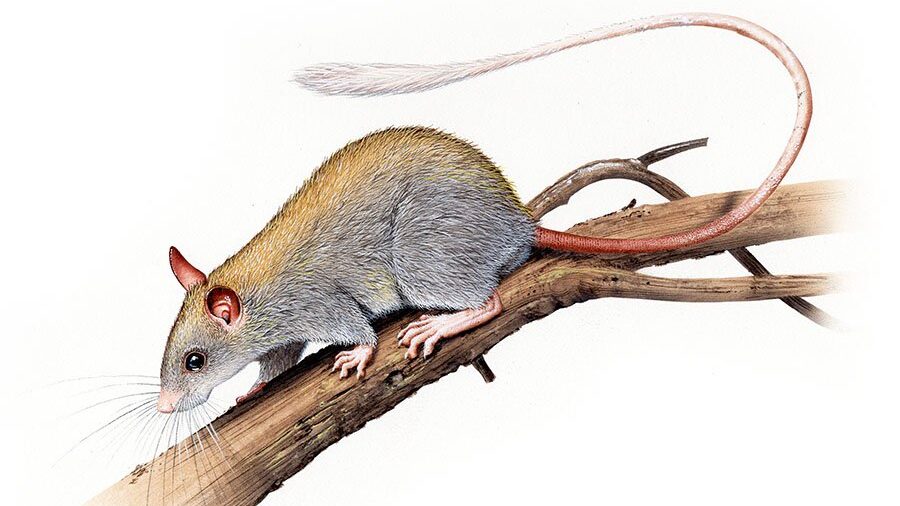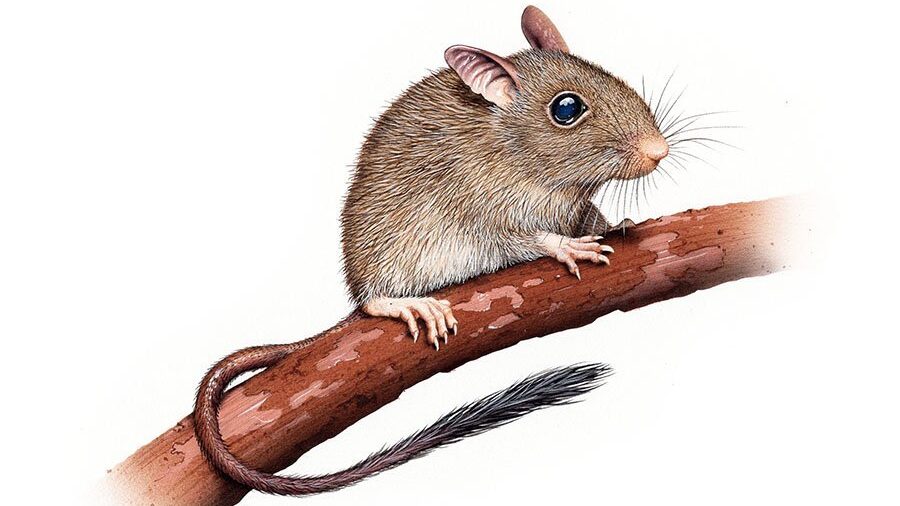Here are 7 clever Aussie native rodents

Spinifex hopping mouse
Notomys alexis

After drenching rains, outback Australia’s dunes come alive at night with spinifex hopping-mice feasting on seeds. They scurry about like typical mice until a predator appears, when they bound away on long hind limbs, like tiny kangaroos, making for the nearest burrow or shrub.
Well adapted for desert life, they sleep by day in burrows and can survive without drinking, obtaining all their water from their food. Australia once had 10 hopping-mouse species: five are now extinct and two are rare. Bucking the trend, the spinifex hopping-mouse remains common.
Rodents are an important food source for birds of prey, snakes, dingoes and other predators. But there was much surprise in 2015 when some salmon catfish taken from the Ashburton River in WA were found to have spinifex hopping-mice in their stomachs. It was suggested that hopping-mouse burrows on the river bank had collapsed into the water.
Central rock-rat
Zyzomys pedunculatus

Similar to some lizards, rock-rats have tails that break off in a predator’s mouth. Flimsy tail skin even slides off as a first line of defence, so a goanna may end up with skin strips in its mouth, or a whole tail, depending on the efficiency of its grip. Rock-rat tails are thick and probably serve as energy stores.
This seed-eating species once ranged from WA’s coast to central Australia. But it’s now critically endangered and survives only in high ranges near Alice Springs, where fissured rock outcrops offer some protection from cats and fires. Vast sand plains surround some of the ranges in which this rat once occurred, raising questions about how an animal that needs rocks had colonies separated by so much sand. The answer is probably that today’s sand plains, many of which are less than 1 million years old, have smothered intervening rocks that rats once used.
Black-footed tree-rat
Mesembriomys gouldii

Australia has tree-rats in the sort of niche squirrels occupy in the Northern Hemisphere. Weighing up to 830g, the black-footed tree-rat is the largest of them. It is mostly arboreal and builds dens usually in tree hollows, but sometimes also in pandanus crowns and buildings, emitting grumbling and growling threats if its home is approached.
At night this tree-rat has been known to roam up to half a kilometre away from
its home den foraging for nuts, fruits and flowers. It also eats termites and other insects and even freshwater mussels.
Although introduced rats can have up to 10 young in a litter, black-footed tree-rats only have 1–3 offspring at a time. These cling tightly to their mother’s teats as she scampers about, running with her or submitting to being dragged along.
Golden-backed tree-rat
Mesembriomys macrurus

A golden strip along its head and back give this species colour and distinction. Yet another of Australia’s declining rodents, it was first discovered in WA’s Pilbara in 1875 but hasn’t been seen there since. It was once widespread in the NT’s Top End but, based on reports by Aboriginal elders, became extinct there a decade ago. Today its stronghold is the northern Kimberley, where it scampers about in rainforest patches, woodlands and rock outcrops, foraging by night for flowers, fruits and insects.
Brush-tailed rabbit-rat
Conilurus penicillatus

In the Kimberley’s remote Mitchell Plateau the brush-tailed rabbit-rat is faring well – good news for a species declining elsewhere in its range across north-western Australia. It emerges after dark from eucalypt hollows, logs or pandanus crowns to feed on seeds and occasionally fruits, grasses, tree leaves and termites. Its future can’t be taken for granted because a close relative, the white-footed rabbit-rat, once found widely in south-eastern Australia, hasn’t been seen alive since 1862. Cats and habitat loss are blamed.
Water-rat or Rakali
Hydromys chrysogaster

Rat fur was once a fashion item, and to this end Australian water-rats were trapped in large numbers during the 1930s and ’40s. To meet demand for capes and cloaks, one furrier firm even proposed rat farms for Tasmania’s swamps.
Trapping intensified during World War II when muskrat furs stopped arriving from the USA. Water-rats served well, being large with thick fur to insulate them when they dive for fish, frog, waterbird, mussel and crayfish prey.
Today this rodent is protected. Water-rat is a bland name for such a dramatic hunter, and many nature-lovers would prefer to see an Aboriginal name, rakali, embraced instead. In Melbourne, rakali can be seen at dusk around St Kilda Pier and on the Elwood Canal footpath. They feed mainly at night, at ‘tables’ – rocks or logs where they dismember mussels and yabbies and abandon the hard parts.
Western pebble-mouse
Pseudomys chapmani

Some of the strangest constructions made by animals in Australia are the mounds of stones, up to 9sq.m in area, built by the western pebble-mouse. These small rodents move thousands of pebbles, each weighing up to half their own weight, to create a landscape dotted with miniature stone ‘volcanoes’ in which the ‘craters’ serve as burrow entrances.
As many as 25 mice live under one mound. The purpose of the pebbles isn’t yet known, but probably has to do with maintaining humidity underground and stopping goannas from clawing their way in for mouse meals. The mounds last decades, if not centuries, providing homes for numerous generations.
The western pebble-mouse lacked a scientific name until 1980; since then, two
more pebble-mouse species have been named. Scientists began naming Australia’s rodents during the 18th century, so it’s surprising that these mice eluded recognition for so long, given their durable engineering works.


